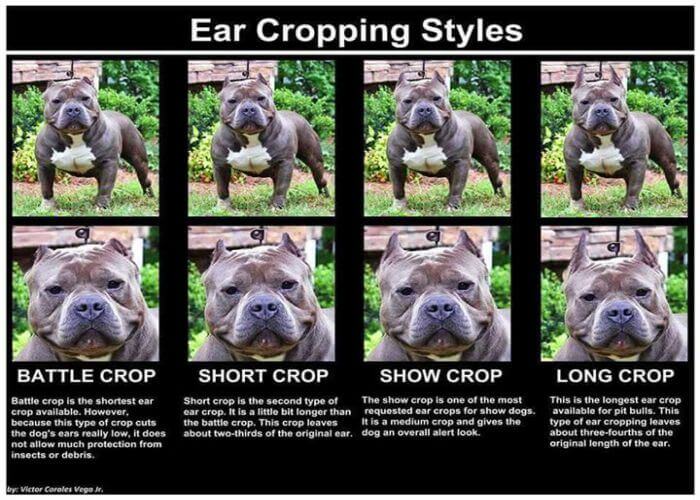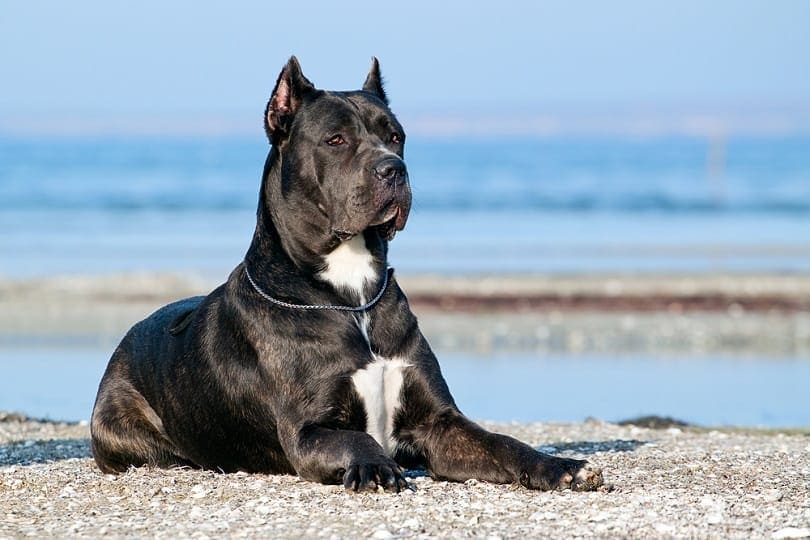On Doberman discussion forums, there has been a lot of false information spread about how much it costs to trim a Doberman’s ears. Many prices owners list on public forums are either misleading, very out-of-date, or do not apply to the majority of owners (such as the cost a breeder incurs when cropping numerous puppies simultaneously). That’s why we made the decision to obtain some precise (and updated for 2022) figures for the cost of cropping a Doberman’s ears.
In the United States, a Doberman ear cropping procedure at a vet’s office averages $631. Prior to the procedure, many owners will spend an additional $107 on recommended blood work. Following surgery, owners can post their dog’s ears regularly themselves or pay between $15 and $65 for each adjustment if it is not covered by the cost of the procedure.
The price ranges for an ear cropping procedure on an 8-week-old Doberman puppy are listed in the table above, which has been rounded up to the nearest whole dollar. To obtain an accurate estimate of the current costs of this procedure, we contacted veterinarians who specialize in ear cropping across the country.
Before scheduling the Doberman’s actual ear cropping procedure, the majority of veterinarians want to pre-examine the dog. The cost of this is typically included in the price of the entire ear crop. The pre-exam that was necessary before the ear crop surgery was performed at only one of the eleven veterinarians mentioned above; because it was necessary, we included its cost in the table above.
The veterinarian will check the puppy during the pre-surgery examination to ensure that they are a good candidate for ear cropping and that there is a high likelihood that the ears will successfully stand. Much of this depends on the veterinarian’s assessment of the dog’s ear cartilage thickness. It’s best to schedule an appointment with a veterinarian as soon as possible for this preliminary examination because the ears naturally get thicker and firmer with age.
Most vets recommend having a Doberman puppy’s ears cropped between the ages of 7 and 9 weeks, but no later than 12 weeks. Remember, it’s best to get in touch with your veterinarian as soon as you can about having your dog’s ears cropped because they are frequently booked months in advance and won’t do it if your dog is too old by the time they can get him in for surgery.
When getting your Doberman’s ears cropped, the actual ear cropping surgery typically accounts for the majority of the cost. The majority of the vets we spoke with suggested that you deliver your Doberman puppy early in the morning and pick him up in the afternoon. Only one person said they planned to keep the dog overnight, and another said they would keep it for three days after surgery. The duration of the stay was always factored into the cropping price.
The price of the ear cropping procedure typically includes the following, although the actual procedure itself can vary.
Few veterinarians that we spoke to suggested using cones or e-collars to shield the dog’s ears after surgery. Most people seemed to prefer using painkillers and take-home sedatives to stop the dogs from damaging or scratching their ears after surgery. The majority of veterinarians cautioned that the cones frequently “do more harm than good” to the ears by pressing them down flat and decreasing their likelihood of standing.
The use of a therapy laser (also known as a “cold laser”) after cropping was occasionally mentioned as another choice. This is a method to shorten the recovery period following surgery by reducing inflammation. Only one of the veterinarians who provided this service charged an additional $15 for laser therapy.
Prior to a Doberman having their ears cropped, veterinarians frequently recommend blood work, which is optional but highly recommended. Basically, it lowers the procedure’s overall risk by checking for certain disorders that Dobermans frequently have and ensuring that they can tolerate the anesthesia. The veterinarian should be aware of all of these things before surgery.
Very few veterinarians include the cost of this in the price they initially quote for the ear cropping; instead, it is almost always an additional expense. Therefore, when you call around, be sure to inquire about the cost of blood work and whether it is included in the price they give you.
Essentially, the follow-up exam is the veterinarian’s opportunity to examine the healing process, remove the stitches (sutures), and remove the initial bandages they applied to the dog after surgery.
All cases—all but one—had a follow-up examination included in the cost of the actual ear cropping procedure. Only one of the vets we contacted, Broadstreet Animal Hospital, did not offer this as part of their Doberman ear cropping package. They claimed that since they use sutures that naturally dissolve and don’t require manual removal, it wasn’t necessary.
In the weeks and months following surgery, Dobermans’ ears must be “posted” (or braced) into place to guarantee that the ears will stand in the right upright position as the cartilage naturally thickens and hardens with age. Until the ears can reliably stand on their own, this usually necessitates changing the ear posts (also known as “ear wraps”) every 3 to 7 days.
While many pet owners choose to perform the ear posting themselves, some prefer to have their veterinarian handle it because it can be a somewhat laborious procedure. The quotes we received appeared to cover a wide range of prices. Two of the veterinarians we spoke with said the cost of the procedure included unlimited postings, while the other two said they don’t do any postings at their offices and that it is entirely up to the owners to do so. All other veterinarians either included a few for free and then charged for additional postings, or they charged for all changes to postings.
No matter the style (or length) of the crop chosen, most veterinarians will charge the same amount for a Doberman ear cropping. Only one of the eleven veterinarians we contacted—Powell Veterinary Service, Inc.—provided a price that varied according to the crop’s length. We received a quote from this particular veterinarian for an additional $100 if we desired the long, show crop.
This is due to the fact that the longer the ear crop, the harder it is to get the ears to stand. This is more challenging because longer cropped ears are bigger and heavier. This indicates that the veterinarian will typically need to exercise some additional skill during the procedure. Additionally, it will take longer after surgery for the ears to naturally stand up on their own, so the ears will need to be posted into position for a longer period of time.
List of Dog Breeds with Cropped Ears
Many owners of different breeds of dogs crop their puppies’ ears, but the American Kennel Club and the general public accept cropped ears for the following breeds:
Although many other breeds of dogs also have these short ears, it is difficult to identify them because they are not considered purebreds. Please feel free to share the lovely infographic we’ve made with your friends on social media and on your website, which lists some of these most well-known dog breeds with cropped ears.

There are numerous breeds that can have their ears cropped, in addition to numerous ear cropping styles. From the shortest to the tallest ear crop, the four ear cropping styles are as follows:
Right now, short and show styles are the most popular ear crop types.

Is Dog Ear Cropping Legal?
The issue of whether or not ear cropping is legal is still being discussed. More dog owners and anti-cruelty organizations have recently raised awareness of the problem. Through their efforts, several countries have banned the practice altogether.

Ear cropping is already prohibited in nations like Australia, Austria, Belgium, Bulgaria, Denmark, England, Germany, Ireland, Italy, Norway, and Turkey. But nations like Canada and India continue to view it as legal In the United States, each state is responsible for determining whether ear cropping is legal, and some have outlawed the practice entirely.
Despite this, numerous bills to make it illegal only for cosmetic reasons while keeping it legal in medical situations are still being considered throughout the US. If these bills are passed, a dog owner would need a veterinarian’s diagnosis and approval before they could have their dog’s ears cropped.
How Is Ear Cropping Done?
A veterinarian with the appropriate training and license can perform an invasive surgical procedure called dog ear cropping. Basically, the veterinarian administers general anesthesia to the dog and trims the dog’s outer ear tissue to allow the membrane to erect. Without the anesthesia, a dog would be subjected to a great deal of pain because ears are packed with nerve endings. About two-thirds of the pinna, or the floppy area of the ears as we know it, are removed by the veterinarian. Ear cropping is performed between the ages of 8 and 10 weeks. When the puppy is 12 weeks old, some veterinarians can perform the procedure, but anything older than that is not possible because the membrane would have hardened beyond the necessary limit.
FAQ
Will a vet crop a dog’s ears?
Most states still have vets who offer this service. These doctors want to perform ear croppings correctly and with as little discomfort and pain to the animal as possible. Any surgery is painful, but with the right veterinary care, this pain and infection risk can be reduced.
At what age can you crop a dog’s ears?
You should plan to contact our office a few weeks before this age range to schedule your consultation because we typically book out about four weeks for both consultations and surgeries. The ideal age for ear cropping is between 8 and 12 weeks of age. A consultation appointment is required prior to surgery.
Can I crop my dogs ears myself?
Some pet owners opt to have the ears cropped in order to maintain the standard appearance. Although a skilled and certified veterinarian should perform ear cropping on dogs, you can also do it at home.
How much does cropped ears cost?
If you decide to have your dog’s ears cropped, be prepared to spend a lot of money on the procedure. The price typically ranges between $150 to $600.